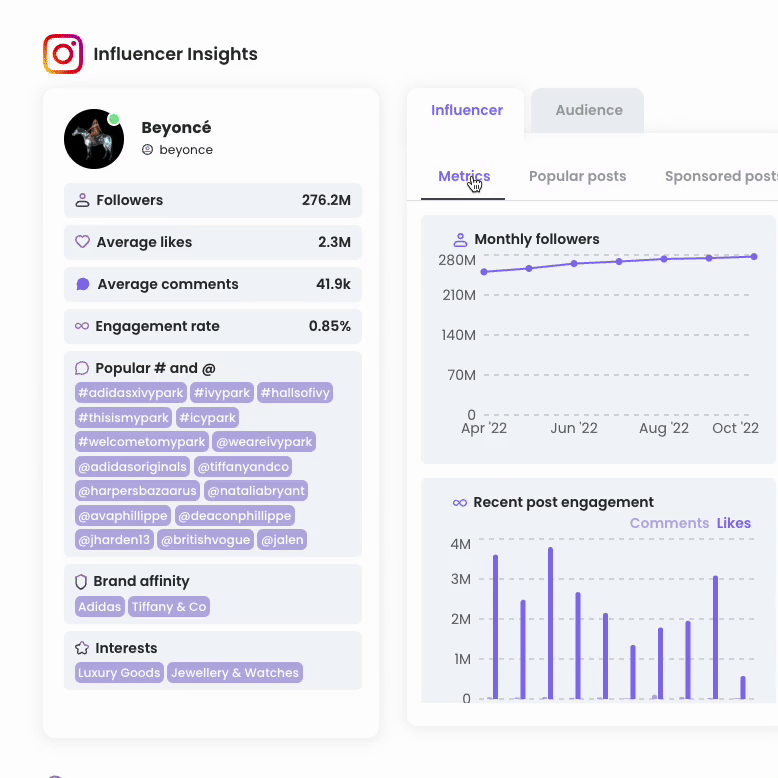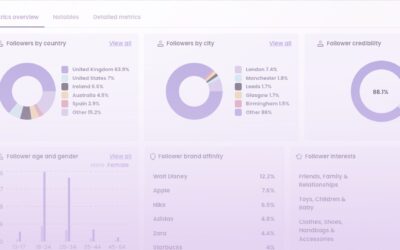The influencer marketing industry is constantly evolving. Instead of random one-off collaborations, brands and influencers are now seeking authentic, sustainable partnerships. Thus, marketers need to turn their focus to building and nurturing successful influencer relationships.
If your influencer marketing ROI has been unsuccessful or stagnant, look no further – influencer relationship management may be the missing piece of your marketing strategy.
1. Why are influencer relationships important?
2. Influencer relationship marketing case studies
3. Tips for influencer relationship management
4. Top influencer relationship management tools
Why are influencer relationships important?
In the last few years, influencer marketing has been rapidly growing and evolving. Oversaturation of sponsored messages on social media channels, mass communication, and one-off collaborations just do not convey the message anymore.
The audience is increasingly conscious, being able to spot fake recommendations and inauthentic collaborations on social media right away. To help your brand’s name stand out, it is imperative to build and manage influencer relationships – with both future and current partners.
The foundation of successful influencer marketing is establishing positive relationships between brands and their ambassadors. It not only creates a personalized approach and opportunities for long-term partnerships but also can make or break the authenticity factor of the influencer campaign.
The influencer’s genuine passion for the brand ethos can really shine through collaborations, depending on the influencer’s relationship with the brand. Successful influencer relationships are built by matching your influencer marketing objectives to the influencer’s personal brand. If your brand values include sustainability, your chosen influencers should also advocate for sustainability.
In general, influencer marketing is evolving into relationship marketing. Creating realistic and compatible long-term relationships with influencers is imperative.

An example of a long-term collaboration: @karmenmikiver x Circle K
2. influencer relationship marketing case studies
As the influencer marketing space grows, we have witnessed a number of world-class brands strategically building successful influencer relations to sustain long-term collaborations. These case studies are intended to give you some inspiration as to how you can really step up your influencer relationship strategy. Keep reading to get some key takeaways!
SKIMS: community-driven management, IGC, and viral TikTok trends
SKIMS is a solutions-oriented brand, founded by Kim Kardashian, specializing in underwear, loungewear and sleepwear.
Their influencer relationship strategy centers around community-driven management through a special ‘influencer program’. Their influencer marketing program focuses on hand-picking talent that advocates for solutions for diverse body types.
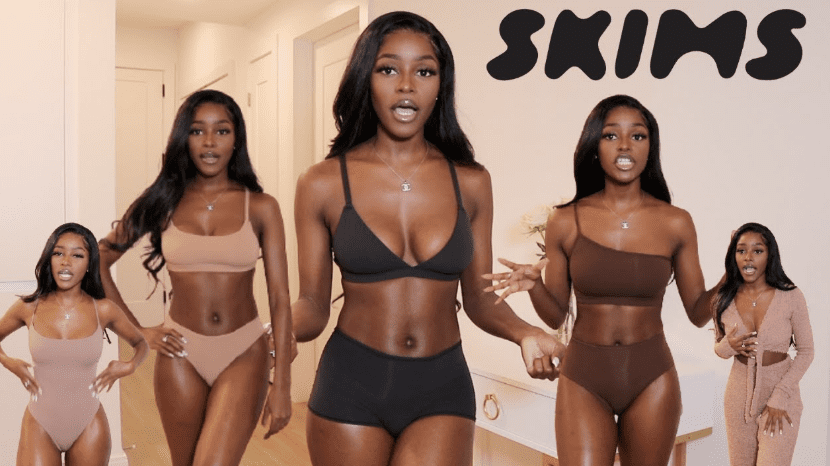
Angwi Tacho – Youtube
They have a very diverse roster of social media influencers, ranging from micros to celebrities, that receive PR packages which are included in IGC (Influencer Generated Content) try-on hauls.
These try-on hauls are the key to driving consumer sales and engagement. Creative freedom is a key aspect of successful influencer relations – there is no clear-cut script for influencers to read through, making the product placement much more authentic and genuine!
@skims The dress that looks good on everyone. @keziv2 & her mom in the #SKIMS ♬ Sheesh - Nate Rose & Ollie Joseph
Capitalizing on such a trend creates a valuable long-term relationship between influencers and the brand. Additionally, resharing and repurposing IGC on the brand’s account is a cost-effective, high-quality way of product promotion.
Hollister: long-term strategy and the power of community
Traditional influencer marketing has previously been sustained by one-off pay-per-post models. However, brands like Hollister challenged this model by adopting long-term (6 months to 1 year) partnerships with influencers.
@zoifishh come pack with me ! 😉 @Hollister Co. #ad #hollistertok #hcorevengesummer #summer2022 ♬ original sound - zoifishh
Hollister uses the power of its influencer community #Holtok to boost audience engagement.
Managing influencer relations on a long-term basis is much more meaningful and results-driven. From TikTok hauls to brand trips and organic brand mentions, Hollister has boosted its TikTok Gen-Z audience by 900%.
Working with influencers that engage with your target audience group is an amazing way to organically boost your brand’s presence. The gen-Z audience on TikTok love relatable, genuine content that speaks to their values and daily lives. Finding relevant influencers and consistently nurturing influencer relationships, just like Hollister might do wonders for your brand.
Additionally, working with the right influencer long-term gives you the freedom to build trust and brand credibility with a set audience group, which may be hesitant to make that first purchase. The audience’s first touchpoint or interaction with your brand may not determine the influencer’s potential. Customers rarely purchase brand recommendations on the spot. They may need to further market research, analyze competitors or even wait for the influencer to mention your brand again! Giving your campaign room for growth in the long term allows for better prospects and more accurate influencer data.
…and this is exactly where Hollister is excelling in its strategy! 🌮
Savage X Fenty: brand ambassadors and measuring performance
Savage X Fenty’s influencer-first strategy has been massively successful in boosting brand performance. Prioritizing influencers as brand ambassadors mean personalizing PR packages and actively listening to the influencer’s feedback.
Not only do they focus on maintaining long-term partnerships, but they also use influencer marketing as a key performance channel.
@ferchugimenez Loving these pieces, check my link in bio! 💗 @Savage X Fenty #savageambassador #savagepartner ♬ original sound - Fernanda
Tracking influencer marketing is a key aspect of Savage X Fenty’s strategy. Analyzing spikes in engagement, clicks, and revenue is an effective way of maintaining influencer relationships, on a long-term basis.
What is the most effective way to gather and analyze such key data? An influencer relationship management software, of course. Vast amounts of influencer data is required to have such successful campaigns and brand relationships. Many brands are now actively using influencer CRMs to manage influencer relationships and discover new influencers.
Not only will you be saving time switching between apps and traditional spreadsheets, but you will also gather automated influencer data, help monitor branded content, and much more.
📝 Building an influencer relationship management strategy for your brand
“Cool examples,” you might think – but how to create a strategy for building, nurturing and maintaining relationships with influencers? Here are 7 tips for creating an influencer relationship management strategy, whether you’re a brand or an influencer marketing agency representative!
1. Implement a long-term influencer marketing strategy
To build substantial brand credibility, trust, and strong relationships with influencers, you must think long-term. Consumers’ spending habits are no longer based on a singular interaction with your brand: on average, customer needs 7-8 touchpoints to do a purchase decision. Instead, you should increase brand awareness, create interest, and finally, capture the demand.
Onboarding a long-term influencer who speaks for your brand on a consistent basis is optimal. The influencer’s audience will find your brand increasingly credible, leading to higher engagement and sales. Additionally, influencers prefer working with brands on a long-term basis, as it provides a more stable form of income.
Read more: Should you go for long-term influencer collaborations?

@itslindaling is an ambassador of Löwengrip – she even states it in her bio!
2. Constantly measure and optimize your pool of influencers
According to the Pareto principle, 20% of the efforts bring 80% of the results. That also applies to influencer marketing efforts: you can assume that 80% of the impact is created by 20% of the influencers you work with.
Thus, you should constantly measure and optimize your strategy. Add new creators to your influencer marketing campaigns monthly and work with them for at least 3 months to see if their audience resonates with your brand. If they bring results, they are good fit influencers for your brand – turn them into your brand ambassadors and continue working with them!
This way, you’ll build an army of relevant influencers who bring results to your brand.
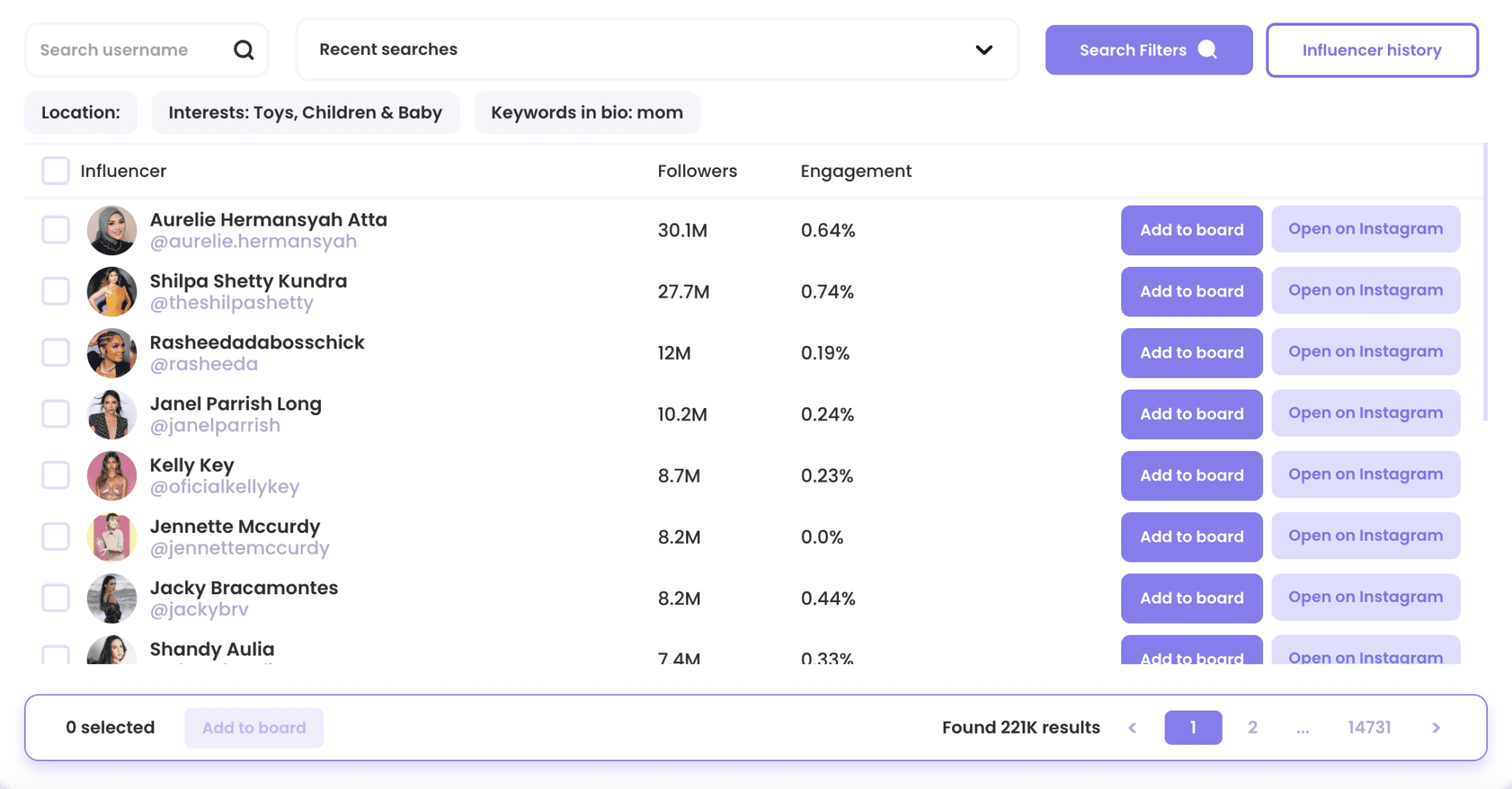
Promoty’s Influencer Search helps you to quickly find new influencers 😻
2. Turn your customers into brand ambassadors
Ideally, you’d like to work with authentic influences who truly like your brand and are sincerely willing to recommend it to their followers. That’s why we always recommend finding influencers from your customer base or social media followers: these are the people who already know your brand!
Identifying a brand’s influential customers and giving them incentives to share the product or create social content is definitely a trend we’re seeing – and as it’s authentic, it’s bringing results. So if you find a customer you’d like to work with, add them to your influencer program.
P. S. If you create a free account on Promoty and add your Instagram or Twitter username, we’ll give you a list of influencers who have engaged with your brand on social media. If you like someone, you can add them to your influencer campaign! Try it out yourself 🤍

4. Choose the right influencers for different target groups
When choosing influencers for your brand, you should make sure that the influencer’s audience matches the brand’s target audience. If you have several target audiences, you need several influencers – it’s just each target audience is following different influencers.
Creator management is especially important for brands that deal with several products, business lines, and target groups. For example, MyProtein might have a different set of influencers for whey protein products, vegan protein products, food supplements, and activewear.
Additionally, they want to make sure to work with enough male and female creators, lifestyle sportsmen, and professional athletes. Not only will influencers be sent tailored products, but it will also be much more genuine product placement, and thus, bring better results for the brand.
If you’re running an influencer marketing agency, you obviously need to carefully select influencers for each brand you work with – considering their target audience, brand values and brand voice.
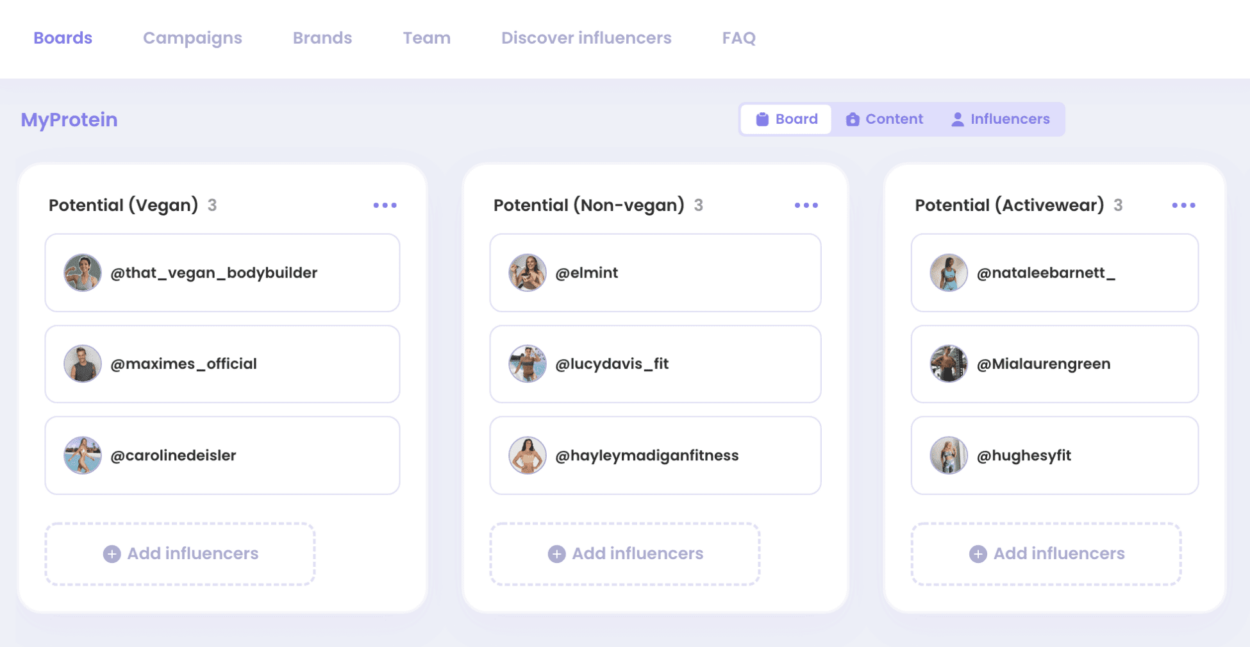
If MyProtein used Promoty’s influencer CRM, they could sort their influencers like this 👆🏼
5. Constantly build and nurture relationships
From what we’ve seen, the key to building strong influencer relations is personal communication with a touch of small details.
Instead of throwing two big influencer campaigns yearly, keep in touch with your influencer partners all year round: remember their birthdays, send them surprise packages, and invite them to PR events. For this, you need an influencer CRM tool that allows you to manage and organize all your (potential) influencers; add notes, labels, and team comments – such as Promoty!
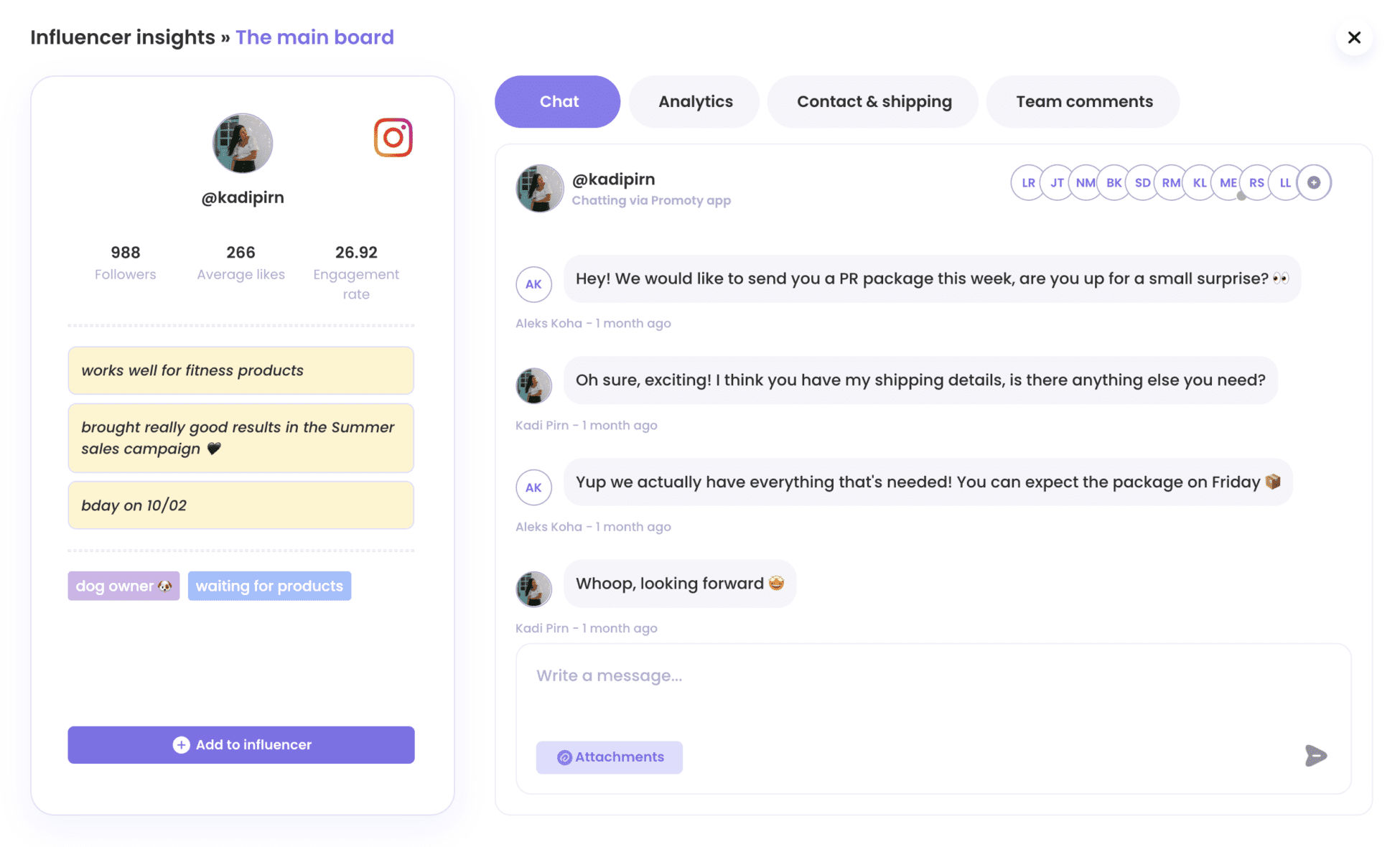
A screenshot of Promoty’s influencer relationship management platform
6. Trust your influencers throughout the collaboration
Creative freedom is one of the most important factors of a successful influencer relationship. Gone are the days when influencer managers sent creators word-by-word ad scripts to follow. Followers want authenticity and connection with an influencer, which is very hard to find in scripted ads.
As with any relationship, trust is a crucial factor in building relationships. As an influencer manager, you have to trust influencers: they know their audience the best.
There needs to be sufficient trust and communication between the influencer and brand, to ensure creative freedom is at the forefront of the relationship. That’s another reason to go for long-term partnerships where the influencer already knows the brand!
7. Use an influencer relationship management tool
As influencer management is becoming a central part of brands’ social media strategy, it’s something that can’t be handled without proper software. This has given the rise to IRMs – influencer relationship management tools.
These influencer CRMs are similar to customer relationships management tools like Pipedrive or Hubspot – but they also integrate with social media platforms. This way, brands, and influencer marketing agencies can manage influencers and collaborations, and monitor branded content in one place.
Promoty is one of them: it’s an influencer relationship management platform that allows you to manage influencer relationships with Instagram, TikTok, and Youtube creators. Additionally, you’ll get access to a global influencer database and see detailed profile insights for every creator.
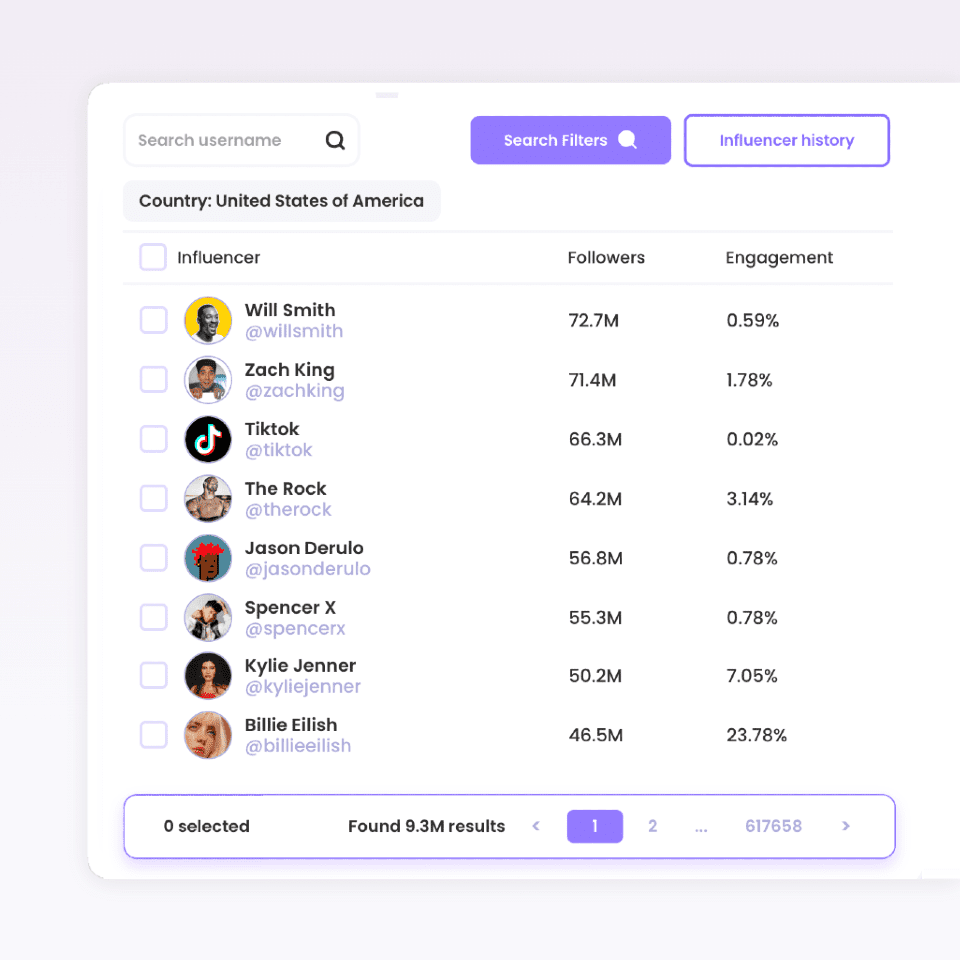
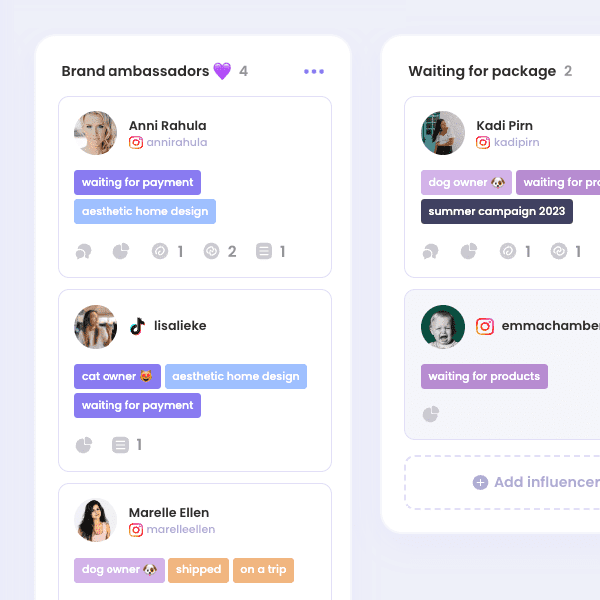
The best influencer relationship management tools
There are countless tools for influencer marketing on the market – but not all of them have the influencer CRM feature. Here are our top 4 tools for influencer relationship management:
🤍 Grin
Grin is an influencer marketing management platform that provides tools for businesses to manage their influencer relationships, campaigns, and collaborations, from creating and managing contracts to tracking performance and making payments.
The pricing starts from $2125 monthly – so if you’re looking for a high-end enterprise solution, Grin might be the perfect match for you! Unfortunately, there is no free trial available.
🤍 Influencity
Influencity is an influencer relationship management platform that offers a variety of tools to help businesses find, engage and track influencers’ performance, similar to Promoty.
The smallest package is $148 monthly – but if you also want email integration, campaigns, and reports, you will be charged $398 monthly.
🤍 Traackr
Traackr is positioning itself as a data-driven influencer marketing platform that is trusted by more executives than any other influencer marketing platform and has helped hundreds of brands improve the efficiency of their influencer spending by 70% or more.
There is no public pricing info is available – but according to review sites, the pricing starts at $30,000.
Read more: Comparison of influencer marketing tools
🤍 Promoty
Promoty is an influencer relationship management platform with a focus on long-term collaborations and brand ambassadors.
You can add Instagram, TikTok, and Youtube creators, and organize them by boards and columns. Every profile can be enriched with notes, labels, and comments – such as “is a vegan” or “difficult to work with”. Additionally, you can use the in-app chat to chat with influencers, and use the ‘team comments’ section to speed up your teamwork.
This way, you could save time on influencer marketing while building strong relationships with influencers who love your brand. Here’s a short video on how it works! 👇🏼
